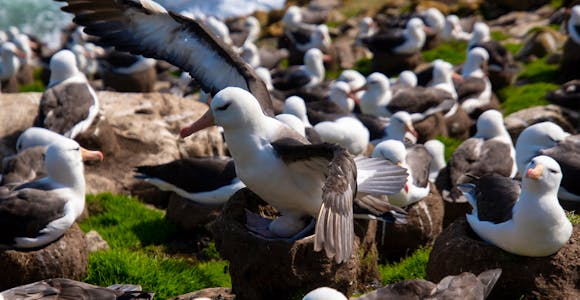
Best Time To Visit the Falkland Islands
Most visitors to the Falkland Islands time their trips to coincide with the Antarctic season, but the islands offer great wildlife experiences throughout the austral summer.
Discover More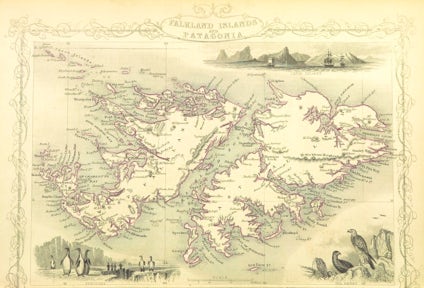
Map of the Falkland Islands produced after Captain Cook's voyages of the 1770s
The exact date that the uninhabited Falkland Islands were first sighted remains lost to history, but the first recorded landing was made by the British Captain John Strong who landed on West Falkland in 1690. He named the islands for Viscount Falkland, treasurer of the Royal Navy.
The British founded a naval base and settlement on Saunders Island in 1765. A few months earlier the French landed on East Falkland in a short-lived attempt to found a colony at Port Louis on East Falkland. The two parties were oblivious of each other’s existence. The French knew the islands as the Iles Malouines, which became Las Malvinas when France sold its claim to Spain a few years later. When English and Spanish ships discovered each other soon after, each regarded the other as being there illegitimately.
In the late 18th century there was a series of tit for tat military encounters until the last Spanish settlers left in 1811. Seven years later Argentina won its independence from Spain, and began to press its own claim of sovereignty.

Watercolour sketch of the now extinct Falkland Islands wolf made in 1837
In the 1820s Argentina began its own short-lived colonisation attempt in East Falkland, which was best by mutinies, tangles with the US Navy when American sealers were arrested and finally expulsion.
One of the Royal Navy ships that visited in this brief period of anarchy was HMS Beagle on a surveying mission under the command of Captain Robert FitzRoy. The ship’s naturalist was a young Charles Darwin, only then starting out on the journey that would lead him to formulate the theory of evolution by natural selection. Darwin wasn’t overly impressed by the Falklands.
Possibly influenced by the island’s rough and ready politics and frontier atmosphere, he described its landscapes as having an ‘air of desolation.’ He mainly collected geological samples, but did at least find time to leave one of the few accounts of the warrah, or Falkland Islands wolf, which was driven to extinction by sheep farmers within 45 years of his visit.

Postcard view of Stanley in 1907
British settlers first arrived in numbers in the 1840s when the government officially declared the Falkland Islands suitable for colonisation. The capital Stanley was founded in 1842, just in time for the California Gold Rush.
With few viable land routes across the continental USA, Stanley boomed from the boom in shipping sailing from the east coast of the States to the west. It was the perfect place for ships to shelter or seek repairs after being battered by the storms around Cape Horn. Sheep farming on the islands also prospered as a result of these new customers, while others came to exploit the Falklands’ oil wealth – held in the blubber of its seals and even penguins.
The real boom years only came to an end when the opening of the Panama Canal changed shipping routes for good, but as Stanley entered the 20th century it was still prospering from high wool prices and meat exports thanks to the invention of frozen shipping.

British warships leaving Stanley at the start of the Battle of the Falklands in 1914
The outbreak of the First World War reminded the British of the strategic location of the Falkland Islands. The Royal Navy used the islands as a base to disrupt German warships off the South American coast. In December 1914, the German navy was sighted near Stanley and in a ferocious battle the squadron was almost completely sunk off in the waters off the east of the islands.
During the Second World War, the Royal Navy again operating around the islands took part in the Battle of the River Plate, the first major naval battle of the war. Although the British cruisers were damaged, they forced the commander of the German flagship Graf Spee to scuttle his own ship rather than surrender it.
In 1944, the Falkland Islands served as the base for Operation Tabarin, which aimed to deter a foreign presence in Antarctica by establishing a base Port Lockroy in Antarctica, as well as reinforce British claims on the islands themselves. The survey work the operation did lead to the eventual establishment of the British Antarctic Survey.

Argentinian soldiers on the streets of Stanley in 1982
Argentina never renounced its claim to the Falkland Islands and renewed its calls in the 1960s during the period of decolonisation in the British Empire. Negotiations between London and Buenos Aires throughout the 1960s and 70s failed to resolve the situation. In 1981 the British removed the automatic right to British citizenship from the islanders while also removing the Royal Navy’s only ship in the South Atlantic.
This was all that General Leopoldo Galtieri, leader of the military dictatorship then in power in Argentina needed to seize the initiative. On April 2 1982, Argentine soldiers landed in the Falkland Islands and seized its garrison. Soon over 10,000 soldiers, mostly conscripts, were in occupation. In response, the British government under Prime Minister Margaret Thatcher sent a large taskforce by sea to wrest back control.
Until the invasion most Britons were reported to have thought that the islands were somewhere north of Scotland; on the other side the celebrated Argentinian writer Jose Luis Borges described the war as 'a fight between two bald men over a comb.'
The occupation lasted 74 days. When the Union Flag was finally raised at the end of the war, the numbers killed in the conflict totalled 255 British forces, 649 Argentine dead and three Falkland Islands civilians, all women.

Downtown Stanley today
Argentina today is a vibrant democracy, but the wound of Las Malvinas continues to affect relations between it and Britain to this day. The only air links between the Falkland Islands and South America run through Chile rather than Argentina and while it is not uncommon to hear Spanish spoken today in Stanley, it is because of migrant workers from Santiago and beyond.
In 2013 the Falkland Islands held its own sovereignty referendum. This was partly in response to tensions following the granting of profitable oil exploration licences and the banning of Falklands shipping from Argentine ports. Over 99% of the votes cast were to remain British.
Today, the Falkland Islands earn the majority of its money from fishing and fisheries licences. No work has been done to develop and oil fields, but tourism has been an increasing income generator for the population, particularly in the outlying islands cruise ship visitors outstrip sheep farming for profitability.
Price Match Promise - We’ll match any price you find elsewhere for the same trip

Most visitors to the Falkland Islands time their trips to coincide with the Antarctic season, but the islands offer great wildlife experiences throughout the austral summer.
Discover More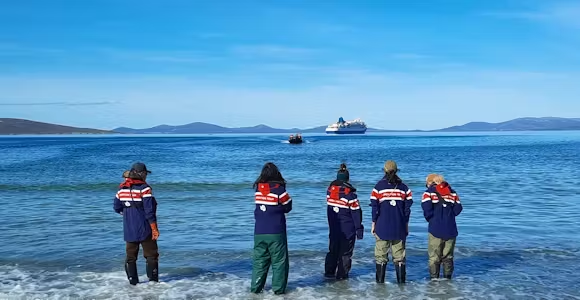
Most people arrive in the Falkland Islands by expedition cruise ships but there are a small number of flight options for those looking for a fly-sail cruise.
Discover More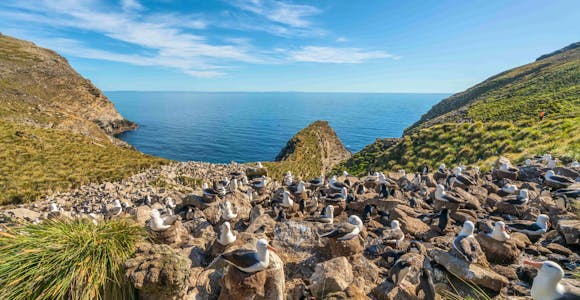
The Falkland Islands are a great wildlife watching location and are home to both sub-Antarctic species and those from mainland South America.
Discover More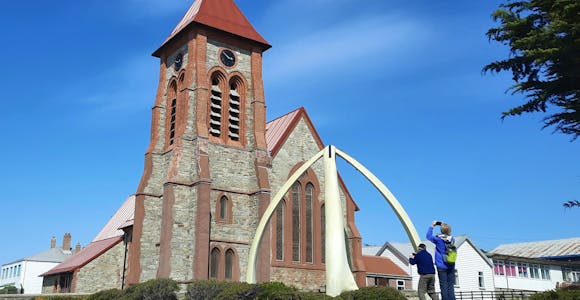
The pocket-sized capital of the Falkland Islands is full of history and easily explored on foot by visitors from expedition cruise ships.
Discover MoreWe'll spend some time listening to your aspirations, then discuss the kind of experience that might suit you.
Next we'll discuss the options, shortlist the best trips for you and present you our impartial recommendations.
We'll place a 24 hour hold on your preferred option - without obligation - whilst we talk through the details.